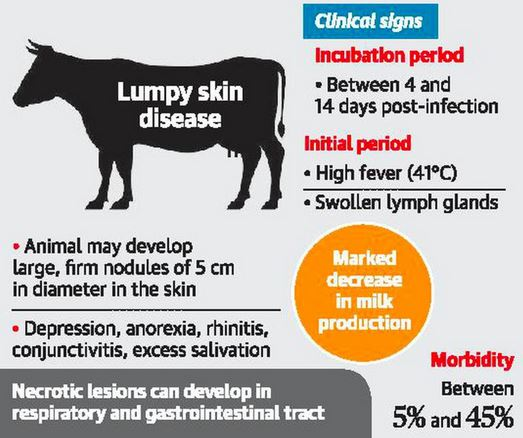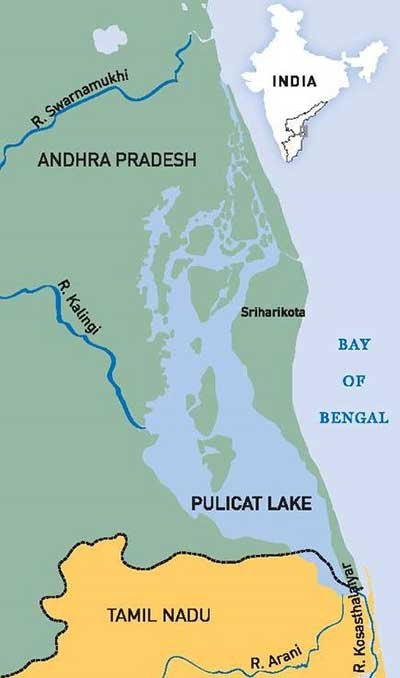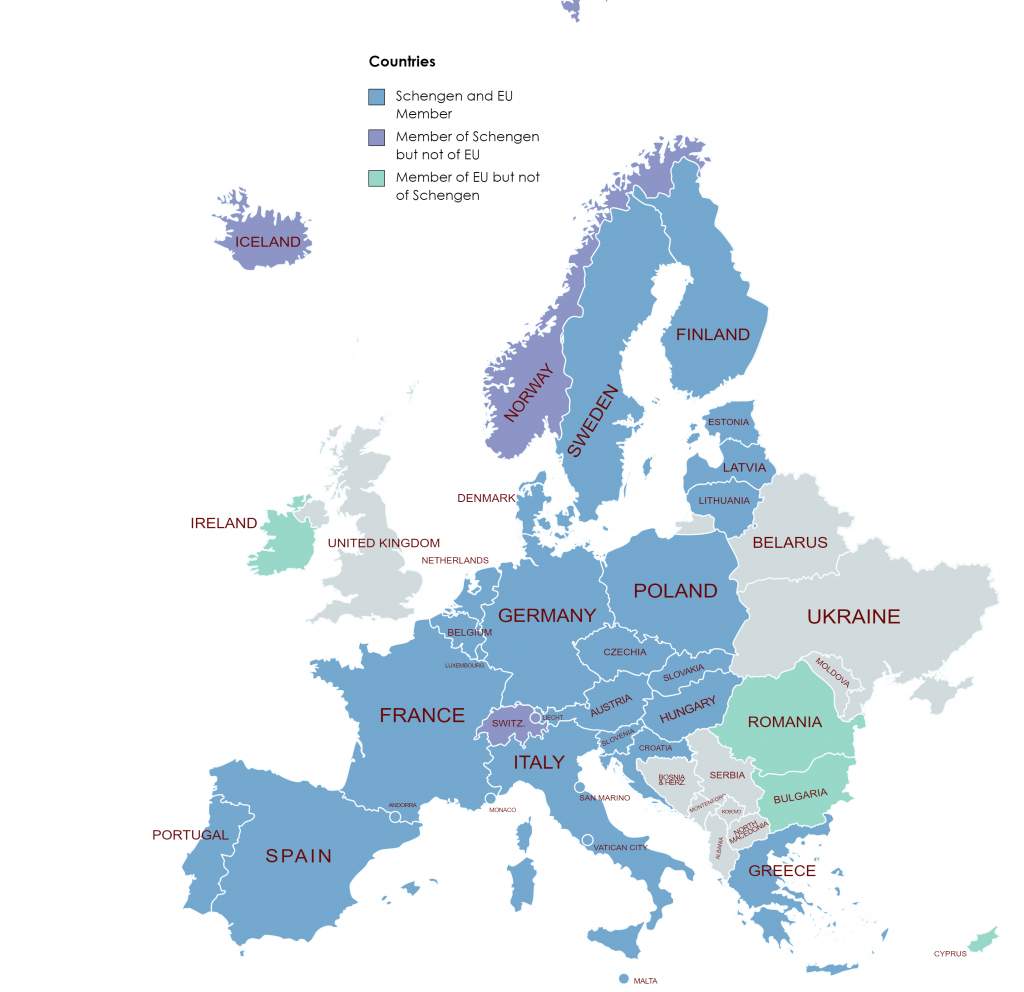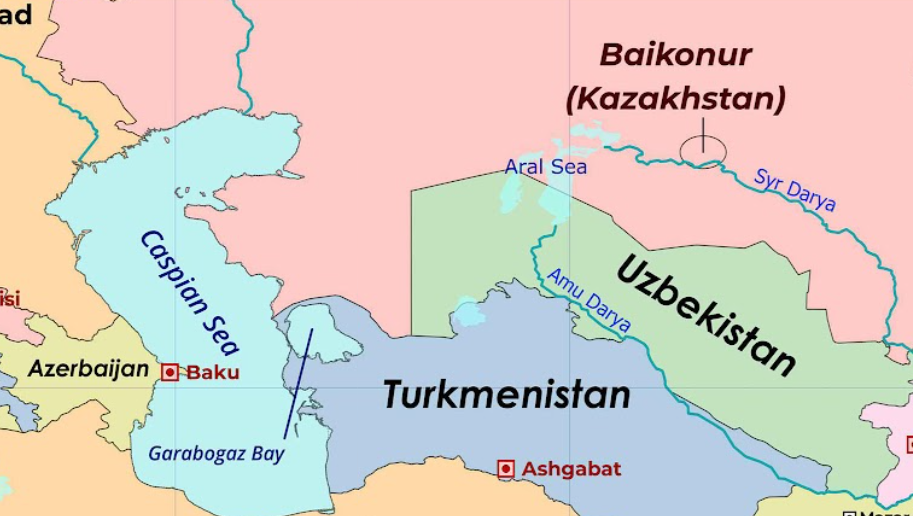
Bharat Ratna Awardees 2024
Subscribe to Never Miss an Important Update! Assured Discounts on New Products!
Must Join PMF IAS Telegram Channel & PMF IAS History Telegram Channel
- Context (IE I TH I IE I PIB): This year’s tally of five awardees, one more than the four announced in 1999, are announced for Bharat Ratna.
- Late Indian agricultural scientist MS Swaminathan,
- Former PM PV Narasimha Rao,
- Veteran politician Lal Krishna Advani,
- Former PM Chaudhary Charan Singh, and
- Former CM of Bihar Karpoori Thakur
M S Swaminathan
- Swaminathan was born in Kumbakonam, Madras Presidency, on August 7, 1925.
- Monkombu Sambasivan Swaminathan died in 2023 at the age of 98 years.
- He was deeply influenced by Mahatma Gandhi’s principles and India’s struggle for independence.
- He initially aimed to pursue a medical career. Still, he shifted his focus to agriculture due to the Bengal famine of 1942-43.
- He is called the ‘Father of the Green Revolution‘.
- He played a significant role in the set of changes introduced in farming in the 1960s and ‘70s that helped India achieve food security.

Career
- He cleared the examination for civil services, but being interested in agriculture, he ended up pursuing research in the field.
- He served at a number of institutions related to the agriculture sector in both India and abroad-
- The Director General of the Indian Council of Agricultural Research (ICAR), 1972-79.
- Principal Secretary, Indian Ministry of Agriculture and Irrigation from 1979 to 1980.
- In charge of India’s Planning Commission’s agriculture and rural development, 1980-82
- Director-General of the International Rice Research Institute (IRRI), 1982
- Independent Chairman of the Food and Agricultural Organisation Council (1981-85),
- President of the IUCN (1984-90),
- President of the World Wide Fund for Nature (India) from 1989-96
- Chairman, Regional Steering Committee for the India – Bangladesh joint Project on Biodiversity Management in the Sundarbans World Heritage Site, 2001.
- He chaired the National Commission on Farmers (NCF) in 2004 to address the issue of farmer suicides in India.
- He co-chaired the United Nations Millennium Project on hunger from 2002 to 2005
- He served as a Member of Parliament in Rajya Sabha from 2007 to 2013.
- He chaired the Task Force (of the Ministry of External Affairs) to oversee agricultural projects in Afghanistan and Myanmar
Contributions
- Role in the Green Revolution: He was widely recognised for his pivotal role in the Green Revolution, a transformative phase in Indian agriculture.
- High-Yielding Wheat and Rice: Swaminathan’s ground-breaking work with Norman Borlaug in developing high-yielding wheat and rice varieties was notable in bringing grain self-sufficiency.
- Farmer Welfare: Swaminathan advocated for the welfare of farmers, emphasising fair prices for agricultural produce and sustainable farming practices.
- He played a role in developing the Protection of Plant Varieties and Farmers’ Rights Act 2001.
- He initiated the concept of trusteeship management of Biosphere reserves. He executed the Gulf of Mannar Biosphere Reserve Trust.
- He founded the M. S. Swaminathan Research Foundation, an NGO that promotes sustainable agriculture and rural development and economic growth strategies, especially for rural women.
- Cryogenetics: He pioneered his research with cryogenetics studies (study of chromosomes) in potato crops.
- He established the Nuclear Research Laboratory at the IARI.
- He played a crucial role in setting up of the
- International Crop Research Institute for the Semi-Arid Tropics in India.
- The International Board for Plant Genetic Resources (Biodiversity International) in Italy.
- The International Council for Research in Agro-Forestry in Kenya.
- Swaminathan introduced one bill during his tenure as M.P., The Women Farmers’ Entitlements Bill 2011, which lapsed. One of the aims it proposed was to recognise women farmers.
- In his later years, he was part of initiatives related to bridging the digital divide and bringing research to decision-makers in the field of hunger and nutrition.
- A term coined by Swaminathan, ‘Evergreen Revolution’, based on the enduring influence of the green revolution, aims to address the continuous increase in sustainable productivity that humanity requires. He has described it as “productivity with perpetuity“.
Awards and Recognition
- MS Swaminathan’s extraordinary contributions to agriculture and food security have earned him numerous awards and honours.
- S.S. Bhatnagar Award for his contribution to biological sciences in 1961
- Padma Shri in 1967
- Ramon Magsaysay Award for Community Leadership, 1971
- Padma Bhushan in 1972
- Albert Einstein World Science Award, 1986
- World Food Prize, 1987
- Padma Vibhushan in 1989
- Tyler Prize for Environmental Achievement, 1991
- UNEP Sasakawa Environment Prize, 1994
- Franklin D Roosevelt Four Freedoms Medal, 2000
- Mahatma Gandhi Prize of UNESCO, 2000
- Planet and Humanity Medal of the International Geographical Union, 2000
- Indira Gandhi Prize for Peace, Disarmament and Development, 2000
- Lal Bahadur Shastri National Award, 2007.
- Bharat Ratna, 2024.
Green Revolution
- MS Swaminathan was instrumental in his pivotal role in the Green Revolution during the 1960s and 1970s.
- It was characterised by the adoption of high-yielding crop varieties and the use of modern agricultural practices.
Wheat Revolution: Seed experimentation and Development of high-yield varieties (HYV)
- He focused on developing the HYV of wheat and rice, crucial for combating drought and famine.
- He invited Norman Borlaug after learning about his newly developed Mexican dwarf wheat variety.
- Aimed to reduce wheat plant height, preventing lodging while maintaining grain yield.
- After visiting major wheat-growing areas of North India, Borlaug sent about 100 kg of seeds of the four Mexican varieties.
- These were sown at IARI; encouraged by the results, Swaminathan proposed that the performance of the high-yielding strains be tested in actual farmers’ fields.
- Within five years, there was what was called the Wheat Revolution.
- The planting of seeds led to India’s foodgrain production surging to 95 mt in 1967-68 and 108.4 mt by 1970-71.
- Wheat output alone rose from 11.4 mt in 1966-67 to 16.5 mt in 1967-68 and 23 mt in 1970-71.
- Research on the C4 rice plant started at the IRRI when he was the organisation’s director general.
- He started working on transferring genes for fertiliser response from Japonica varieties to Indica varieties.
- Yield Gap Reduction: Targeted increasing productivity on existing farmland through HYVs, mitigating the threat of famine.
- Cytogenetics Expertise: Contributions extended to studying chromosomes (cytogenetics) and identifying traits like disease resistance.
- He is associated with research on the cytogenetics of hexaploid wheat.
|
Adverse Effects of the Green Revolution Highlighted by Dr Swaminathan
- In January 1968, he spoke about the dangers of the rapid replacement of numerous locally adapted varieties with one or two high-yielding strains in large contiguous areas.
- Intensive cultivation of land without conservation of soil fertility could lead to the springing up of deserts.
- He cautioned against indiscriminate use of pesticides, fungicides and herbicides and unscientific tapping of groundwater.
Impact of M S Swaminathan’s Contributions
- India Became Self-Reliant in Food Security: The wheat and rice revolution gave the country much-needed respite and confidence to turn the tables on food security in a short time.
- India Became Exporter of Cereals: In the last three years, 2020-21 and 2022-23, India exported 85 million tonnes of cereals, contributing to global food security.
Role in Establishing Minimum Support Price (MSP)
- As the Chairman of the NCF, he submitted five reports.
- One of NCF’s key recommendations was to have MSP for farmers based on the cost of production plus 50 per cent return.
- The correct cost later became a matter of negotiation between different governments.
- One view was interpreting it as the comprehensive cost, which includes not only out-of-pocket expenses of farmers (Cost A2) but also imputed wages of family labour (FL), imputed rent on owned land, and imputed interest on owned capital.
- This is known as the Swaminathan Formula.
- The governments either did not accept the formula or went halfway and accepted at least a 50 per cent return over Cost A2+FL.
Former PM PV Narasimha Rao
- P. V. Narasimha Rao was born in 1921 in Warangal district of present-day Telangana.
- He was an Indian lawyer, statesman and politician who served as the 9th PM of India.
- He went to Nagpur University, where he completed a master’s degree in law.
- Along with his distant cousin Sadasiva Rao, Ch. Raja Narendra and Damodar Rao, P. V. edited a Telugu weekly magazine called Kakatiya Patrika in the 1940s.
- Both P. V. and Sadasiva Rao contributed articles under the pen name Jaya-Vijaya.
- He served as the Chairman of the Telugu Academy in Andhra Pradesh from 1968 to 1974.
- He is known for introducing various liberal reforms to India’s economy.

Political Career
- He was an active freedom fighter during the Indian Independence movement and part of the Vande Mataram movement in 1938 in the Hyderabad State.
Vande Mataram Movement
|
- He joined full-time politics after independence as a member of the Indian National Congress.
- He served as an MLA for Andhra Pradesh State Assembly from 1957 to 1977.
- He became the CM of Andhra Pradesh in 1971 and implemented land reforms and land ceiling acts strictly.
- He secured reservations for lower castes in politics during his tenure.
- President’s rule had to be imposed to counter the Jai Andhra movement during his tenure.
- He served as an MP, Lok Sabha from Andhra Pradesh.
- As an M.P., he handled several diverse portfolios, Home, Defence and Foreign Affairs (1980 to 1984, 1988 to 1989).
- He very nearly retired from politics in 1991. He was INC President from 1991–1996.
- The assassination of the INC President Rajiv Gandhi persuaded him to make a comeback.
- He was the first person outside the Nehru–Gandhi family to serve as PM for five continuous years and the first from Southern India.
- He broke the convention by appointing a non-political economist and future prime minister, Manmohan Singh, as his Finance Minister.
- He also appointed Subramanian Swamy, an opposition party member, as the Chairman of the Commission on Labour Standards and International Trade.
- He also sent opposition leader Atal Bihari Vajpayee to represent India at a UN meeting in Geneva.
Jai Andhra Movement (1972-73)
|
Narasimha Rao Government (1991-1996)
India’s Look East Policy
- It refers to the re-establishment of strategic and commercial connections with Southeast Asia.
- India worked hard to establish ties with the Association of Southeast Asian Nations (ASEAN).
- This helped India’s role as a regional counterweight to China’s geopolitical might.
- The fall of the Soviet Union and a domestic Balance of Payments problem prompted the administration to make significant changes to the country’s foreign policy.
Recognition of Israel
- India established full diplomatic relations with Israel in 1992 and opened an embassy in Tel Aviv.
- India had no presence in Israel from 1947 (when it voted against the birth of Israel at the UN) till 1992, when it had only minimal links (a small Israeli consulate in Mumbai).
- In 1991, the GOI voted in favour of reversing a 1975 UN resolution declaring “Zionism is a form of racism and racial discrimination.”
- The decision was welcomed with widespread mockery, particularly among India’s vast Muslim community.
- In return, GOI invited Yasir Arafat, Palestine’s tallest leader, to a state visit and apprised him of the importance of improving India’s relations with Israel.
Bringing an end to the insurgency and Handling of separatist movements
- He decimated the Sikh separatist movement and neutralised the Kashmiri separatist movement to a certain extent.
- Rao was ‘solely responsible’ for the decision to hold elections in Punjab, no matter how narrow the electorate base would be, Despite the serious threat posed by the Khalistani insurgency.
- Rao’s government introduced the Terrorist and Disruptive Activities (Prevention) Act (TADA), India’s first anti-terrorism legislation.
Managing the aftermath of the Mumbai blasts
- On March 12, 1993, Mumbai was shocked as a series of bombings wreaked havoc.
- Despite strong pushback from the US, the GOI instructed India’s intelligence apparatus to attract the world’s attention to Pakistan’s assistance and financing of terrorism against India.
- Counter-terrorism experts from the US, the UK, and other Western countries were invited to witness the evidence.
Father of Indian nuclear programme
- Rao energised the national nuclear security and ballistic missiles programme.
- His efforts resulted in the 1998 Pokhran nuclear tests.
- He was part of the development of nuclear strategy since he was the Defence Minister of India.
- Rao was the “true father” of India’s nuclear programme. Vajpayee said that, in May 1996, a few days after he became PM, “Rao told me that the bomb was ready. I only exploded it.”
Economic Reforms
- He is often referred to as the ‘Father of Indian Economic Reforms’.
- Rao decided that India, which in 1991 was on the brink of bankruptcy, would benefit from liberalising its economy.
- He appointed Manmohan Singh, a former governor of the RBI, as FM to accomplish his goals.
- Many socialist nationalists criticised this liberalisation at that time.
- He launched a series of pro-globalisation reforms, including International Monetary Fund (IMF) policies, to rescue the nation from economic collapse.
Rao Manmohan Model
- Named after Narasimha Rao and Dr Manmohan Singh.
- This model employs the policy of economic liberalisation and bringing in FDI in 1991.
- Tried Lewis’s model of economic development by unlimited labour supply.
- It reduced import barriers to globalise the economy by granting greater autonomy,
- The functioning of public sector companies was to be improved; foreign direct investment was facilitated, and automatic approvals of up to 51% of the equity were required.
Features of The Rao-Manmohan Model
- Devaluation of the rupee: It was carried out against significant currencies by around 18 per cent to make Indian exports more competitive.
- Gold holdings: It was pledged with the Bank of England in four tranches, raising around $400 million through this route.
- Prior to this, 20 tonnes of gold were sold to the Union Bank of Switzerland or UBS by the State Bank of India to raise around $200 million.
- IMF Loan: The government acquired emergency loans from the International Monetary Fund.
- Trade Policy: A new trade policy was brought in to bring a change in the licensing process.
- It linked non-essential imports to exports to discourage such imports.
- The GOI did away with export subsidies as exports increased because of the massive devaluation of the rupee.
- Tradeable Exim scrips were introduced, granting such scrips to exporters for their use or sale.
- It also did away with the need for routing imports through state-owned firms. The private sector was allowed to make its imports.
- New Industrial Policy (NIP), 1991: It led to changes in the way industries were treated, moving away from a license raj regime.
- The policy relaxed some of the provisions of the Monopolies and Restrictive Trade Practices Act (MRTP Act).
- The policy ended the public sector monopoly in many sectors.
- The changes brought about by NIP resulted in ease of doing business in India.
- They saw an inflow of foreign goods and investments in the Indian market.
- Changes in Taxation regime: Due to the increasing fiscal deficit, the budget increased corporate tax rates by five percentage points to 45 per cent.
- It introduced the concept of tax deducted at source for some financial transactions like bank deposits.
- A scheme for people to declare unaccounted wealth was also announced. People were given immunity from prosecution and the levy of interest and penalty.
- It opened up mutual funds to the private sector and relaxed rules for investment by non-residents.
- Various committees were introduced for proposing financial sector reforms, such as
- Committee for Banking Reforms under former RBI governor M. Narasimham and
- Committee for recommending tax reforms under public finance economist Raja Chelliah.
|
Criticism of the Rao-Manmohan Model
- The model succeeded in terms of growth by raising the GDP growth rate to over 6%.
- The Rao-Manmohan model worked in terms of growth but failed in terms of equity, employment, and poverty reduction.
- Due to the indiscriminate entry of multinationals, a highly capital-intensive pattern of development was adopted.
- It bypassed agriculture, and multinationals began the process of devouring Indian enterprises by raising equity levels above 51 per cent.
Narasimha Rao Government- Major Controversies
The Babri Masjid Demolition
- In December 1992, the Babri Masjid was demolished.
- The national riots that followed the demolition killed over 2,000 people.
Cash for votes scam
- In July 1993, the BJP filed a no-confidence motion against the Congress government.
- The Congress won the confidence resolution after frantic negotiations.
- The JMM MPs were then accused of being bribed to vote for Narasimha Rao.
- In lower courts, he was found guilty (the only prime minister to be found guilty in a corruption case), but higher courts cleared him.
Stock market scam
- Harshad Mehta was arrested in 1992 in connection with a Rs 5,000 crore stock market scandal.
- He said that he paid Rs 1 crore to Narasimha Rao to get him off the hook in the case.
- Narasimha Rao refuted the charges.
Lal Krishna Advani
- L K Advani is an Indian politician who served as the 7th Deputy PM of India from 2002 to 2004.
- L K Advani was born on 8 November 1927 in Karachi, British India, to a Sindhi Hindu Brahmin family.
- His family migrated to India during the partition of India and settled in Bombay.
- He graduated in Law from the Government Law College of Bombay University.
- He assisted K. R. Malkani with the publication of Organiser, the weekly newsletter of the RSS.
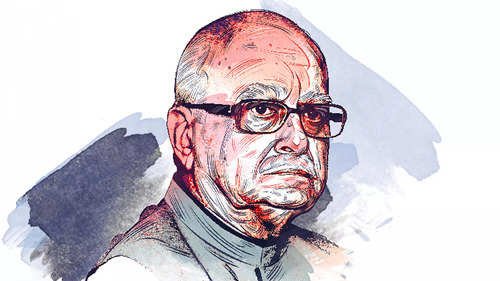
Career
- He is one of the co-founders of the Bharatiya Janata Party (BJP) and a member of the Rashtriya Swayamsevak Sangh (RSS).
- He became a pracharak (full-time worker) and became the secretary of the Karachi unit in 1947.
- He is the longest-serving Minister of Home Affairs, serving from 1998 to 2004.
- He is also the longest-serving Leader of the Opposition in the Lok Sabha.
- He served a total of four terms as Rajya Sabha M.P and seven terms as Lok Sabha M.P.
Bharatiya Jan Sangh
- He became a member of the Bharatiya Jana Sangh (BJS).
- BJS was a political party founded in 1951 by S P Mookerjee in collaboration with the RSS.
- In 1970, He became Rajya Sabha MP from Delhi for a six-year tenure.
- In 1973, he was elected as the president of BJS.
- On 26 June 1975, He was arrested in Bangalore during the Emergency period.
- 1976, He was re-elected to the Rajya Sabha from Gujarat.
- After the imposition of an Emergency and crack down on opposition parties, BJS and other opposition parties merged to form the Janata Party (JP).
Janta Party (JP)
- In the 1977 general elections, the JP won due to the widespread unpopularity of the emergency.
- He became the Minister of Information and Broadcasting.
- The government did not complete its five-year term and was dissolved to call fresh elections in 1980, where the Janata party lost to the Indian National Congress.
- Subsequently, he became the leader of the opposition in the Rajya Sabha.
As Minister of Information and Broadcasting
- His first task as I & B minister was to present a White Paper in Parliament on the misuse of the mass media during the Emergency.
- He tabled two bills in the Lok Sabha, and both bills were passed-
- Repeal the Prevention of Publication of Objectionable Matter Act.
- The Parliamentary Proceedings (Protection of Publication) Act, popularly known as the Feroze Gandhi Act, was restored.
- He initiated a severe debate, both within and outside Parliament, on the need for institutional autonomy for AIR and Doordarshan.
- The concept of Prasar Bharati, an autonomous corporation to run the two media organisations, was a recommendation of the B.G. Verghese committee, which he constituted.
Bharatiya Janta Party (BJP)
- In 1980, he, along with erstwhile members of the BJS, quit the JP and formed the BJP with A B Vajpayee as the first president.
- In 1982, he was elected to the Rajya Sabha from Madhya Pradesh for the third time.
- The 1989 General Election underscored the results of his efforts. BJP bounced back from its 1984 tally of 2 to achieve an impressive 86 seats.
- He has served as the President of the BJP for the longest period since its inception in 1980 (1986-1990, 1993-1998, 2004-2005).
- Despite being at the helm of the BJP, he named A B Vajpayee as the party’s prime ministerial candidate in late 1995.
- In the 1996 general election, the BJP became the single largest party and was consequently invited by the President to form the government.
- Advani did not contest the polls over allegations of involvement in the Hawala scandal, from which he was acquitted later by the Supreme Court.
- In the 2004 general election, the BJP suffered a defeat; Advani won his fifth term in the Lok Sabha and became the leader of the opposition.
- Vajpayee retired from active politics after the 2004 defeat, promoting Advani to lead the BJP.
- He was the prime ministerial candidate of the BJP during the 2009 general election.
- Although Advani won his sixth term in Lok Sabha, the BJP lost to Congress and its allies in the 2009 general elections.
- Advani contested the 2014 general election from Gandhinagar, winning for the fifth time.
- Later, he was part of the Marg Darshak Mandal of the BJP, along with M M Joshi and A B Vajpayee.
Rath Yatra
- Advani often organised Rath yatras or processions to boost the popularity of the BJP and unify the Hindutva ideology.
- He organised six rath yatras or processions across the country-
- Ram Rath Yatra (1990): Advani started his first yatra from Somnath in Gujarat, which concluded at Ayodhya. The procession was linked to the dispute at the Ram Janmabhoomi site at Ayodhya.
- Janadesh Yatra (1993): Four processions from four corners of the country were organised; they were organised with the purpose of seeking the people’s mandate against the two bills, the Constitution 80th Amendment Bill and the Representation of People (Amendment) Bill.
- Swarna Jayanti Rath Yatra (1997): The procession was conducted in celebration of 50 years of Indian Independence and to project the BJP as a party committed to good governance.
- Bharat Uday Yatra (2004): The yatra took place in the run-up to the 2004 election.
- Bharat Suraksha Yatra (2006): The BJP launched a nationwide mass political campaign consisting of two yatras – one led by Advani from Dwaraka in Gujarat to Delhi and the other led by Rajnath Singh from Puri to Delhi.
- The Yatra was focused on fighting left-wing terrorism, minority politics, price rises and corruption, and the protection of democracy.
- Jan Chetna Yatra (2011): It was launched from Bihar against the corruption of the ruling UPA government and promoting the BJP agenda of good governance and clean politics.
Ram Rath Yatra (1990)
- Under Advani, the BJP became the political face of the Ayodhya dispute over the Ram Janmabhoomi site.
- The movement was started by the Vishwa Hindu Parishad (VHP) for the construction of a temple dedicated to the Hindu deity Rama at the site of the Babri Masjid in Ayodhya.
- When VHP’s temple agitation was diminishing in 1990, Advani infused new life into it by launching a Somnath to Ayodhya Rath yatra.
- The yatra made him the face of the temple struggle.
- By the end of the yatra, he had transformed into a charismatic and articulate mass leader.
- Advani was among the accused in the Babri demolition case but was acquitted in 2020 by a CBI’s special court.
Chaudhary Charan Singh
- Chaudhary Charan Singh was born on December 23, 1902, in the village Noorpur, District Ghaziabad of UP.
- The ‘Kisan Diwas’ is observed on 23rd December to celebrate his birth anniversary.
- He received a Master of Arts degree in 1925 and a Law degree in 1926 from Meerut College.
- Historians and people alike frequently refer to him as the “Champion of India’s peasants”.

Role in the Independence Movement
- In February 1937, he was elected to the Legislative Assembly of Uttar Pradesh (United Provinces) Chhaprouli (Baghpat) at the age of 34.
- In 1938, he introduced an Agricultural Produce Market Bill in the Assembly, which was intended to safeguard the interests of the farmers.
- The Bill was adopted by most of the States in India.
- Mahatma Gandhi’s non-violence influenced him; he entered India’s Independence Movement and was imprisoned several times.
- In 1930, he was sent to jail for 12 years by the British for infringement of the salt laws.
- He was jailed again for one year in November 1940 for individual Satyagraha movement.
- In August 1942, he was jailed again by the British and released in November 1943.
- His ancestor was a prominent leader of the Indian Rebellion of 1857, Raja Nahar Singh of Ballabhgarh (Haryana).
Political Career After Independence
- Charan Singh opposed Jawaharlal Nehru on his Soviet-style economic reforms.
- He was of the opinion that cooperative farms would not succeed in India.
- He opined that the right of ownership was essential to the farmer in remaining a cultivator.
- He wanted to preserve a system of peasant proprietorship.
- His political career suffered due to his open criticism of Nehru’s economic policy.
- He left the Congress party in 1967 and formed his political party, Bharatiya Kranti Dal.
- He served as CM of Uttar Pradesh twice- 1967-1968 and 1970.
Chief Minister of Uttar Pradesh
- With the help and support of Raj Narain and Ram Manohar Lohia, he became CM of Uttar Pradesh in 1967 and later in 1970.
- As CM, he was instrumental in bringing about the Land Holding Act 1960, which aimed to lower the ceiling on land holdings to make it uniform throughout the state.
National Politics
- In 1974, he merged his party with the Samyukta Socialist Party to form the Bharatiya Lok Dal (BLD).
- In 1975, he was jailed by then-Indian PM Indira Gandhi during the emergency period.
- In the 1977 general elections, following the revocation of Emergency, the BLD emerged as a crucial component of the Morarji Desai-led Janata Party government that came to power in 1977.
- He served as Deputy Prime Minister, Home Minister and Finance minister in the Janata government.
Minister of Home Affairs (1977 – 1978)
- As a Home Minister, he decided to dissolve all the state assemblies that were under Congress rule.
- He argued that these assemblies no longer represent the will of the electorate of their respective states.
- On 3 October 1977, he got Indira Gandhi arrested from her 12 Willingdon Crescent residence.
- The charges against her were that during the 1977 election,
- She misused her position to get jeeps for election campaigns and
- Contract between the ONGC and the French oil company CFP.
- He resigned from the cabinet because of differences between them over Indira Gandhi’s trial.
- In 1979, Singh returned to cabinet and held two portfolios of Deputy Prime Minister and Minister of Finance.
Prime Ministership
- Morarji Desai resigned as PM in July 1979, and Charan Singh was appointed PM after Indira Gandhi promised that Congress (I) would support his government from outside on certain conditions.
- He was sworn in as Prime Minister on 28 July 1979.
- Indira’s conditions included dropping all charges against her and Sanjay Gandhi.
- Since he refused to drop them, Congress withdrew its support just before Singh was to confirm his majority in the Lok Sabha.
- He resigned as PM in August 1979, after just 23 days in office, becoming the only PM never to obtain the confidence of Parliament.
- The Lok Sabha was dissolved, and Charan Singh continued as caretaker PM until January 1980.
Later Political Years
- In 1979, he formed Lok Dal by merging the Janata Party (Secular), Socialist Party and other.
- In 1984, he founded a new party, Dalit Mazdoor Kisan Party, by merging Lok Dal, the Democratic Socialist Party, the Rashtriya Congress and some leaders of the Janata Party.
- Later, he changed its name back to the Lok Dal.
Karpoori Thakur
Life and Career
- He was born in village Pitaunjhia (Karpoori Gram), in the Samastipur district of Bihar.
- He was voted in as an MLA in 1952 and remained an MLA till his death in 1988, except when he became an MP in 1977 and when he lost an Assembly election in 1984.
- Thakur was education minister of Bihar from March 5 1967 to January 28, 1968.
- Twice he was Bihar’s CM (December 1970-June 1971 and December 1977-April 1979).
- During his second innings as a CM he could not finish a full term because of the reservation policy he implemented.
- Democracy, debate and discussion were integral to him.
- He participated in the freedom struggle and was jailed (during the Quit India movement in 1942).
- He was part of the anti-Emergency movement along with the other key socialist leader Jayaprakash Narayan.
- He emerged as the tallest backward caste leader in Bihar despite belonging to the minority caste.
- Rise of the leaders he mentored, from numerically stronger castes Lalu Prasad from the Yadavs, Ram Vilas Paswan among Dalits, took away his pole position.
- He is known to have been firmly against dynastic politics.
Major Policy Decisions
- While his policy decisions were polarising, he was respected personally for his clean image.
- He is known for many of his decisions —
- Removing English as compulsory subject for the matriculation examinations;
- Prohibition of alcohol;
- Preferential treatment for unemployed engineers in government contracts,
- A layered Reservation system.
- Promotion of Hindi language in government offices.
- Declaring Urdu as the second official language in Bihar.
- Waiving school fees,
- Strengthening the Panchayati Raj system by holding regular elections.
- As a CM he took many steps for the welfare of senior citizens as well.
Layered Reservation System
- Thakur’s life revolved around the twin pillars of simplicity and social justice.
- In June 1970, the Bihar government appointed the Mungeri Lal Commission.
- Commission named 128 “backward” communities, 94 of which were identified as “most backward”.
- The Janata Party government of Thakur implemented the recommendations of the Commission.
- The ‘Karpoori Thakur Formula’ provided 26% reservation (in government services), of which
- OBCs-12% share,
- The economically backward classes among the OBCs-8%,
- Women-3%, and
- The poor from the “upper castes”– 3%.
- This reclassification was seen as a precursor to the Mandal Commission report that recommended 27% reservations for OBCs.
- Thakur faced derogatory and even abusive slogans from the upper castes, directly targeting his caste.
- Politically too, his decision of bringing in the reservation policy has been seen as hasty.
- He included Poors from the Upper Caste much before the GoI came up with the EWS quota.
Social Justice and Social Reform
- Social justice was most dear to Jan Nayak Karpoori Thakurji.
- He belonged to the most backward strata of society but he worked for all the people.
- He practiced “assimilative and inclusive politics”.
- Karpoori thakur and Jay Prakash Narayan of Janata Party launched the iconic ‘Sampoorna Kranti’ movement which aimed at transforming Indian society in a non-violent way.
- He envisioned a society where resources were distributed fairly and everyone, regardless of their social standing, had access to opportunities.
- He wanted to address the systemic inequalities that plagued Indian society.
- Throughout his political career, he worked to improve education facilities for the poor.
- He was a proponent of education in local languages so that people from small towns and villages could climb the ladder and attain success.





![PMF IAS Environment for UPSC 2022-23 [paperback] PMF IAS [Nov 30, 2021]…](https://pmfias.b-cdn.net/wp-content/uploads/2024/04/pmfiasenvironmentforupsc2022-23paperbackpmfiasnov302021.jpg)

